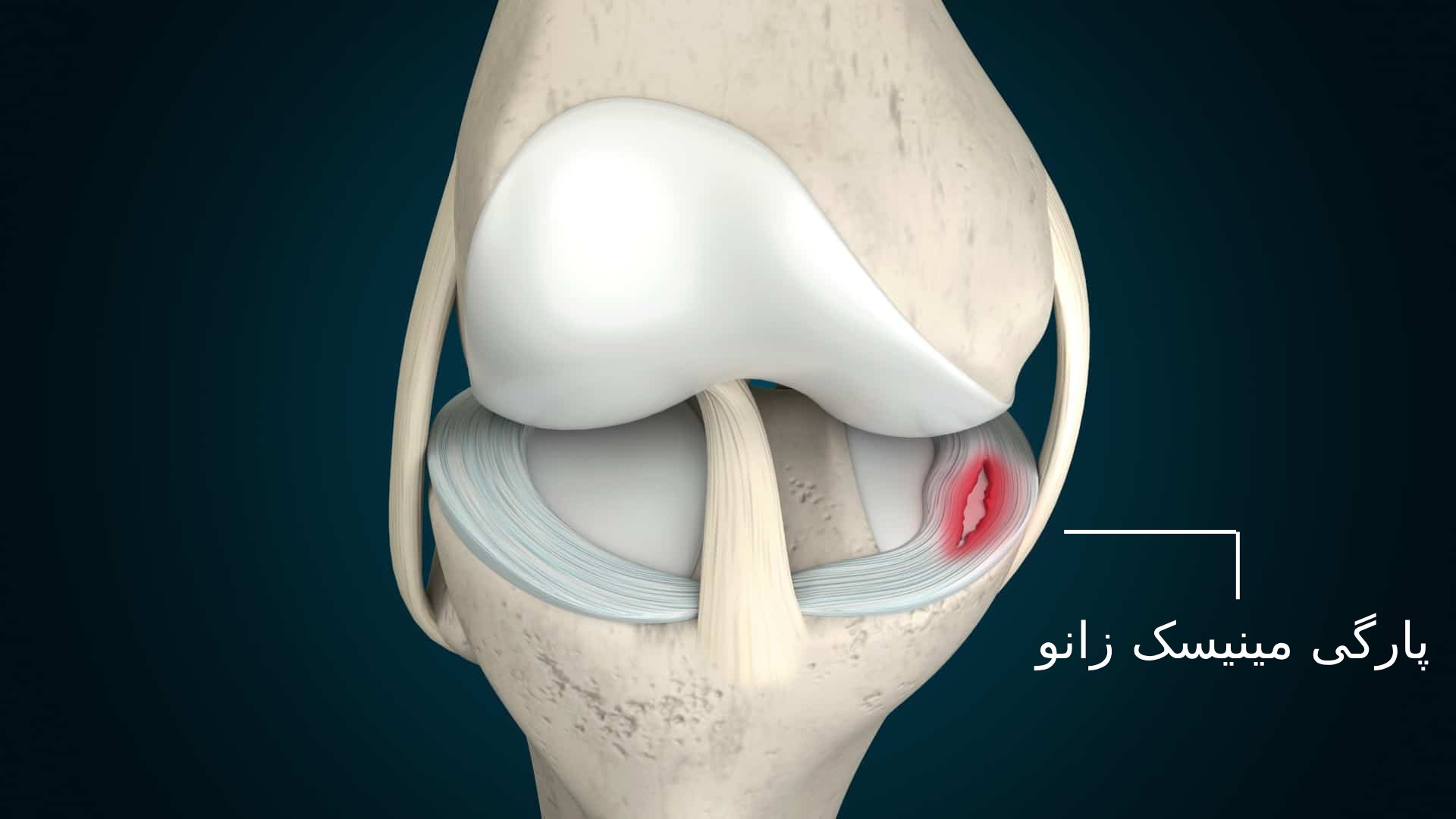Understanding Torn Meniscus

The meniscus is a C-shaped piece of cartilage that acts as a shock absorber between the thighbone (femur) and shinbone (tibia) in your knee. It helps distribute weight evenly across the joint, preventing friction and wear and tear. A torn meniscus occurs when this cartilage is damaged, often due to a sudden twisting or impact.
Anatomy and Role of the Meniscus
The meniscus is composed of two distinct parts: the medial meniscus (on the inside of the knee) and the lateral meniscus (on the outside). These crescent-shaped pieces of cartilage play a vital role in knee function. They provide stability and cushion the joint during movement, facilitating smooth articulation between the femur and tibia. The meniscus also contributes to joint lubrication and helps distribute forces across the knee, reducing stress on the cartilage and bones.
Types of Meniscus Tears
Meniscus tears can vary in severity and location, and are generally categorized as:
- Horizontal tear: This type of tear runs across the width of the meniscus.
- Vertical tear: A vertical tear runs along the length of the meniscus.
- Radial tear: This tear extends from the outer edge of the meniscus toward the center.
- Degenerative tear: This type of tear occurs due to wear and tear over time, often associated with aging or overuse.
Causes of Meniscus Tears, Torn meniscus
Meniscus tears can result from various causes, including:
- Sudden twisting or pivoting movements: This is a common cause, especially during sports activities that involve quick changes in direction, like basketball, football, or skiing.
- Direct impact to the knee: A direct blow to the knee, such as from a fall or car accident, can also cause a meniscus tear.
- Overuse or repetitive stress: Repeated stress on the knee, particularly in activities like running or squatting, can lead to a degenerative tear over time.
- Aging: The meniscus naturally deteriorates with age, making it more susceptible to tearing.
Activities and Injuries Leading to a Torn Meniscus
Many activities and injuries can result in a torn meniscus. Some common examples include:
- Sports: Contact sports like football, basketball, and hockey are common culprits. Non-contact sports like tennis, skiing, and running can also cause meniscus tears, particularly if they involve sudden twisting or pivoting movements.
- Falls: Falling on a bent knee or landing awkwardly after a jump can put significant stress on the meniscus, increasing the risk of a tear.
- Car accidents: The impact forces in car accidents can cause a torn meniscus, especially if the knee is bent or twisted during the collision.
Symptoms and Diagnosis

A torn meniscus is a common knee injury that can cause pain, swelling, and difficulty moving the knee. Understanding the symptoms and how a torn meniscus is diagnosed is crucial for effective treatment.
Symptoms of a Torn Meniscus
The symptoms of a torn meniscus can vary depending on the severity of the tear. Some common symptoms include:
- Pain: Pain is a common symptom of a torn meniscus. The pain may be sudden and sharp, or it may be a dull ache that gradually worsens over time. The pain may be worse when you bend or straighten your knee, or when you put weight on the injured leg.
- Swelling: Swelling is another common symptom of a torn meniscus. The swelling may be noticeable immediately after the injury, or it may develop gradually over a few days.
- Clicking or Popping: You may hear a clicking or popping sound in your knee when you bend or straighten it. This is caused by the torn meniscus moving around in the joint.
- Locking or Catching: Your knee may lock or catch when you try to bend or straighten it. This is because the torn meniscus is blocking the movement of the joint.
- Stiffness: You may experience stiffness in your knee, especially after periods of rest.
Diagnostic Methods
Diagnosing a torn meniscus usually involves a combination of physical examination and imaging tests:
- Physical Examination: A physical examination can help your doctor determine the location and severity of the tear. Your doctor will ask you about your symptoms and how the injury occurred. They will also examine your knee to check for tenderness, swelling, and range of motion. They may also perform specific tests to check for instability or a torn meniscus, such as the McMurray test.
- Imaging Tests: Imaging tests can help confirm the diagnosis of a torn meniscus and provide more detailed information about the injury.
- MRI (Magnetic Resonance Imaging): An MRI is a highly sensitive imaging test that uses magnetic fields and radio waves to create detailed images of the knee joint. An MRI can show the exact location and severity of the tear, as well as any other injuries that may be present.
- X-ray: X-rays can help rule out other conditions, such as a fracture, but they may not always show a torn meniscus. X-rays can show if there is any bone damage or arthritis in the knee.
- Arthroscopy: Arthroscopy is a minimally invasive surgical procedure that uses a small camera and surgical instruments to examine the inside of the knee joint. Arthroscopy can be used to diagnose a torn meniscus, and it can also be used to repair or remove the torn tissue. This procedure is often performed if the diagnosis is uncertain or if surgery is being considered.
Importance of Accurate Diagnosis
An accurate diagnosis is essential for guiding treatment decisions. A torn meniscus may not require surgery, especially if it is a small tear and the symptoms are mild. However, a larger tear or a tear that is causing significant pain or instability may require surgery to repair or remove the torn tissue.
Treatment Options

So, you’ve got a torn meniscus. No biggie, right? Well, it depends. There are a bunch of ways to deal with it, from rest and rehab to surgery. Let’s break down your options.
Conservative Management
If your tear isn’t too bad, you might be able to manage it without surgery. This is called conservative management, and it usually involves a combination of things like:
- RICE (Rest, Ice, Compression, Elevation): This is your go-to for the first few days after a meniscus tear. It helps reduce swelling and pain.
- Pain Medications: Over-the-counter pain relievers like ibuprofen or acetaminophen can help manage pain and inflammation.
- Physical Therapy: A physical therapist can teach you exercises to strengthen your knee and improve flexibility. This can help you get back to your normal activities.
Surgical Intervention
If conservative management doesn’t work, or if your tear is severe, surgery might be an option. There are two main types of surgery for torn menisci:
- Meniscectomy: This is the most common type of surgery for a torn meniscus. It involves removing the damaged portion of the meniscus. This can help relieve pain and improve knee function.
- Repair: If the tear is in a good location and the meniscus is healthy, your surgeon might be able to repair it. This involves stitching the torn parts of the meniscus back together. Repairing the meniscus can help preserve the cartilage in your knee and prevent future problems.
Factors Influencing Treatment Decisions
The best treatment for a torn meniscus depends on a few factors, including:
| Factor | Impact on Treatment Decision |
|---|---|
| Age | Younger patients are more likely to benefit from repair, while older patients may be better candidates for meniscectomy. |
| Activity Level | Athletes and people who are very active may need surgery to return to their desired level of activity. |
| Severity of the Tear | A small, stable tear may be treated conservatively, while a large, unstable tear may require surgery. |
Torn meniscus, a common injury among athletes, can significantly impact performance. The recovery process can be lengthy, requiring physical therapy and careful management. For basketball players like JJ McCarthy, maintaining peak condition is crucial, and his performance statistics jj mccarthy stats provide a clear picture of his progress.
Understanding the mechanics of a torn meniscus helps us appreciate the dedication and resilience required for athletes to overcome such challenges and return to their sport.
Torn meniscus, a common injury among athletes, can be a painful and debilitating experience. The impact of such an injury can be felt on the field, as seen in the resilience of many vikings qb who have overcome adversity to continue their careers.
Despite the challenges, a torn meniscus can be treated effectively, allowing athletes to return to their sport and regain their full athletic potential.
